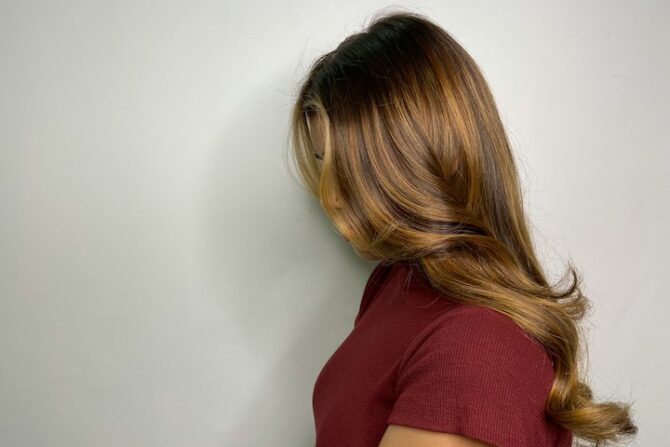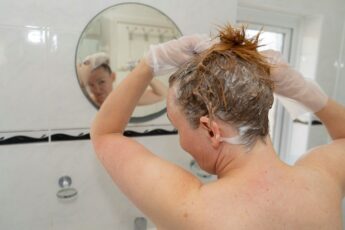Let me guess—you straighten, curl, or blow-dry your hair more times than you care to admit. Same here. And if you’re like me, you’ve heard that using a heat protectant is a must. So you grab one off the shelf, maybe spray it on before styling, and hope for the best. But have you ever flipped the bottle around and actually read the ingredients?
That label is packed with long words and chemical names most of us can’t even pronounce. And yet, we trust it to keep our hair safe from 300-degree heat. That’s kind of wild, isn’t it?
Today, let’s walk through a full heat protectant ingredient analysis together—without the science lecture. Just you and me, figuring out what’s good, what’s not, and what your hair truly needs to survive your styling routine.
Table of Contents
Key Takeaways
- Most of the real work in a heat protectant comes from silicones, proteins, and moisture-holding ingredients.
- Avoid drying alcohols, excessive fragrance, and overuse of silicones.
- Natural oils are great for support, but not enough for high heat.
- The first five ingredients tell you almost everything you need to know.
- Choose your protectant based on your hair type, styling habits, and sensitivities.
Why Ingredient Analysis Even Matters
If you’ve ever used a heat protectant and still noticed split ends, dryness, or breakage, it’s not just your imagination. Some of these products don’t work the way they claim to. Others do help, but only for specific hair types or styling tools.
When you start paying attention to the ingredient list, something shifts. You stop getting fooled by shiny packaging or catchy phrases like “salon-tested.” You take control of your hair health—on your terms.
Think of this like reading the back of a snack label. You want to know what you’re actually putting in your body, right? Same goes for what you’re putting on your hair.

What a Heat Protectant is Supposed to Do
Before we dive into the ingredients, let’s clear up what a heat protectant should be doing:
- Acts like a barrier between your hair and your styling tool
- Reduces water loss caused by high temperatures
- Helps smooth the cuticle to avoid frizz and split ends
- Minimizes breakage by reducing damage from heat stress
That’s the goal. Now let’s look at which ingredients actually help make that happen—and which ones just tag along for the ride.
Also Read: Shiny Hair Secrets: Hair Glazing Techniques That Actually Work
The Ingredients That Actually Work
Let’s start with the good stuff—the ones that are actually doing your hair a favor.
Silicones (like dimethicone, cyclomethicone)
I know silicones have a bad reputation, but here’s the truth: when it comes to heat protection, they work. Dimethicone and cyclomethicone are two of the most common. They coat your strands in a thin, flexible layer that shields against heat while also smoothing frizz.
Think of them like the oven mitts for your hair. Without that layer, heat penetrates directly into your cuticle. And that’s where breakage begins.
But—and this is important—too much silicone can lead to buildup over time. That’s why it’s key to use a clarifying shampoo once in a while if your protectant relies heavily on these.
Hydrolyzed Proteins (like keratin, silk protein)
If your hair feels weak or breaks easily, these are the ingredients to look for. Hydrolyzed proteins basically patch up gaps in your hair shaft. When exposed to heat, they reinforce your strands so they don’t fall apart under pressure.
Keratin is a favorite in many salon products for a reason. It’s naturally found in your hair already, so when it’s added in a lightweight, hydrolyzed form, your strands know exactly what to do with it.
Polyquaterniums
This is a fancy name for a group of conditioning agents. They help your hair hold onto moisture and give it a soft, slippery feel. If you’ve used a heat protectant that left your hair smooth without feeling greasy, this ingredient might be why.
It also helps tame flyaways and static, especially after flat ironing.
Natural Oils (like argan oil, grapeseed oil, shea butter)
These can be amazing if used right. Grapeseed oil, for example, has a high smoke point and can handle moderate heat. Argan oil is packed with fatty acids that nourish and coat the hair without weighing it down.
Just keep in mind—these oils aren’t magical. They don’t replace a proper heat protectant formula, but they can support one. So if you see them mixed in with proteins or silicones, that’s a good sign.

The Ingredients You Might Want to Rethink
Not every bottle is working in your favor. Some ingredients show up way too often, and they’re not doing your hair any good.
Drying Alcohols
Here’s where things get confusing. Some alcohols are good for your hair (like cetyl alcohol or stearyl alcohol—they’re fatty and moisturizing). But the ones you need to look out for are short-chain drying alcohols like alcohol denat., isopropyl alcohol, or ethanol.
These evaporate fast, which might sound good—until you realize they also strip moisture right out of your hair. In a heat protectant, that’s the exact opposite of what you want.
Too Many Silicones
Yep, I know I just said silicones can be helpful—and they are—but when a product is loaded with too many, your hair starts to feel heavy and greasy. Worse, it can block moisture from getting in, especially if you don’t clarify your hair regularly.
It’s all about balance. A little silicone = protection. Too much = limp, dull hair.
Fragrance and Fillers
You know that sweet, tropical scent you love? It might not love you back.
Fragrance is one of the top causes of scalp irritation. If your scalp feels itchy or you’re breaking out along your hairline, check the label. Synthetic fragrances don’t serve any protective purpose—they’re just there for the smell.
Same goes for unnecessary thickeners and colorants. They make the product look nice, but they don’t help your hair one bit.
How to Read the Label Without Losing Your Mind
This part used to stress me out. But once you know what to look for, it gets easier—promise.
- Check the first five ingredients. That’s where the bulk of the formula is.
- Look for active protectants like dimethicone, hydrolyzed protein, or polyquaterniums up top.
- Avoid products where alcohol denat. is listed first.
- If the ingredient sounds like a perfume or has a long number after it (like “Fragrance (Parfum)” or “CI 19140”), it’s probably not helping your hair.
You don’t need to memorize every chemical name. Just know your red flags and green flags.
Natural vs Synthetic: Does It Matter?
This one’s tricky. There’s a lot of hype around “natural” products right now, and I get it. Natural sounds safer. But here’s the thing:
- Natural oils are great moisturizers but can’t always handle high heat.
- Synthetics like silicones are man-made—but they offer real heat protection when used right.
Instead of choosing sides, I try to look at the overall formula. If a product blends a couple of light silicones with nourishing natural ingredients, that’s usually the sweet spot.
The ingredient label matters more than the label on the front of the bottle.
Check Out: Low-Heat Styling Methods That Actually Work (No Fuss, No Damage)
Picking the Right Heat Protectant for You
Here’s where it gets personal. The best heat protectant for me might not be the one that works for you. So here’s how I break it down:
By Hair Type
- Fine hair: Look for light formulas with fewer oils and silicones
- Thick hair: You can handle richer ingredients and heavier protectants
- Curly hair: Moisture-rich protectants with fatty alcohols and oils work best
- Straight hair: Stick with lightweight sprays that don’t weigh you down
By Styling Habits
- If you flat iron every day, go for serious protection (dimethicone + protein).
- If you only blow dry once a week, something lighter or oil-based might be enough.
- Use a leave-in with thermal protection if you like multi-tasking products.
By Sensitivities
- Hate itchy scalp? Watch out for fragrance and harsh preservatives.
- Avoiding buildup? Rotate in a silicone-free option once a week.

Conclusion
Now that you’ve seen what goes into these bottles, it’s hard to go back, isn’t it? But that’s a good thing. You’ve got the tools now. You know what a good heat protectant ingredient analysis looks like. You can walk into a store (or scroll online) and actually understand what you’re buying.
No more crossing your fingers. No more falling for marketing fluff. From now on, you’re choosing your products on purpose—with knowledge.
And let’s be honest, that’s the kind of energy your hair deserves.
Frequently Asked Questions
What ingredient gives the most heat protection?
Silicones like dimethicone and cyclomethicone provide the strongest heat-resistant barrier. They don’t absorb heat; they block it.
Are natural oils enough as a heat protectant?
Not really. Oils like grapeseed or argan can help, but only for low to medium heat. You’ll still want something formulated for heat styling.
Should I avoid all alcohols in heat protectants?
No. Just avoid the drying ones (like alcohol denat.). Fatty alcohols like cetyl and stearyl alcohol are actually good for moisture and smoothing.
How do I know if a heat protectant is safe for daily use?
Check for lightweight ingredients, no buildup-causing fillers, and a balance of moisture and protection. If it leaves your hair soft without feeling greasy, it’s a good bet.



